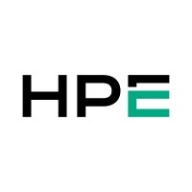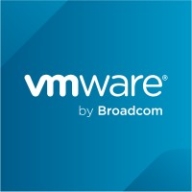

VMware vSAN and HPE Alletra dHCI compete in the hyperconverged infrastructure category. Based on feature integration and intelligent management, VMware vSAN appears to have the edge with comprehensive integration capabilities within VMware environments.
Features: VMware vSAN is renowned for its scalability and seamless integration within the hypervisor core, which simplifies management and provides flexibility in hardware compatibility. Its noteworthy features include stretched cluster solutions, high availability, and integrated tools for efficient setup and management. Conversely, HPE Alletra dHCI stands out with its AI-driven Infosight, offering intelligent storage solutions, high availability, and adaptable integration with on-premises and cloud platforms.
Room for Improvement: VMware vSAN can enhance by improving integration, reducing licensing costs, and offering better scalability options. Users have noted slower regeneration post-failures and the need for more effective cloud integration. HPE Alletra dHCI could expand hypervisor support beyond VMware, enable improved file-level restoration, and provide more granular upgrade options. Both aim to improve cost efficiencies and broaden compatibility.
Ease of Deployment and Customer Service: VMware vSAN is noted for its ease of deployment within VMware environments, leveraging existing infrastructure. Its customer support is usually dependable, though occasionally slow. On the other hand, HPE Alletra dHCI is praised for straightforward deployment with excellent initial configuration tools and notable customer support. Both solutions provide a responsive support framework, with opportunities to enhance speed and depth of technical assistance.
Pricing and ROI: VMware vSAN commands a higher upfront cost, justified by its comprehensive capabilities and enterprise-grade features. Although expensive, users report satisfactory ROI through stability and scalability. HPE Alletra dHCI is regarded as competitively priced, delivering significant ROI through cost-effectiveness and quick recovery of investments. Both solutions align economically with their market expectations, yet potential customers should consider exploring customized pricing offers.
| Product | Market Share (%) |
|---|---|
| VMware vSAN | 13.9% |
| HPE Alletra dHCI | 4.6% |
| Other | 81.5% |


| Company Size | Count |
|---|---|
| Small Business | 24 |
| Midsize Enterprise | 2 |
| Large Enterprise | 3 |
| Company Size | Count |
|---|---|
| Small Business | 98 |
| Midsize Enterprise | 58 |
| Large Enterprise | 128 |
HPE Alletra dHCI, a data storage solution from Hewlett Packard Enterprise (HPE), offers Disaggregated Hyperconverged Infrastructure (dHCI), separating storage from compute resources for independent scaling and management. Utilizing HPE Nimble Storage technology, known for AI-driven optimization, it ensures high performance and management efficiency. With scalability and agility, users can effortlessly expand storage or processing power as data requirements evolve. Additionally, boasting rapid deployment in under 15 minutes and a claimed 99.9999% data availability, HPE Alletra dHCI promises robust and reliable storage solutions.
VMware vSAN is a software-defined storage product that is used in collaboration with VMware ESXi hypervisor and that provisions and manages storage based on policies, regardless of the underlying hardware. The solution enables you to prime your business for growth through its seamless evolution (it is integrated with vSphere and requires no new tools), its flexibility, and its multi-cloud capabilities. As an industry-leading software, VMware vSAN provides high levels of performance with minimal impact on CPU and memory.
VMware vSAN Features
VMware vSAN has many valuable key features. Some of the most useful ones include:
VMware vSAN Benefits
There are many benefits to implementing VMware vSAN. Some of the biggest advantages the solution offers include:
Reviews from Real Users
Below are some reviews and helpful feedback written by PeerSpot users currently using the VMware vSAN solution.
PeerSpot user Yves S., CEO, Cloud Evangelist at Comdivision Consulting GmbH, says, “vSAN gives us a lot of advantages when we need to expand resources. We have an overall larger host infrastructure, and we split that up for specific customer test and use cases. In that specific scenario, we can easily add more hosts or reduce the number of hosts in the environment.”
A reviewer who works in Infrastructure Security explains, “The ease of use is great. The initial setup and upgrade process was pretty straightforward. And, technical support is great.”
Laurent N., Director at Softlogic, comments, "The feature that I have found most valuable is that it is easy to deploy. It is easy to create and delete virtual servers. It is easy to create the load balancing and the clustering."
We monitor all HCI reviews to prevent fraudulent reviews and keep review quality high. We do not post reviews by company employees or direct competitors. We validate each review for authenticity via cross-reference with LinkedIn, and personal follow-up with the reviewer when necessary.